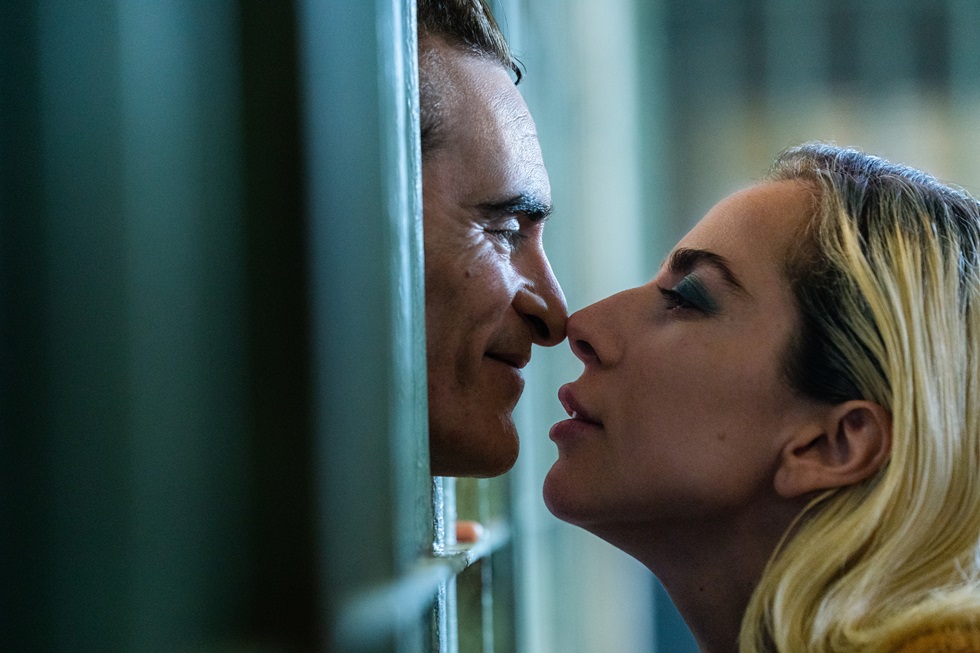
Perhaps Joker (2019) was lightning in a bottle. It was a loose adaptation of the iconic Batman villain that didn’t glorify his villainy but put it into a real-world landscape that explored themes of poverty and alienation. It was impactful, gritty, and entertaining. The same cannot be said for its sequel, Joker: Folie à Deux. The outstanding performances in this musical/psychological thriller can’t save the film from itself. The movie is overly aimless, self-indulgent, and miserable in the hopes that the audience will forget that it doesn’t seem to have a plot.
Directed by Todd Phillips with a screenplay co-written with Scott Silver, Joker: Folie à Deux picks up Arthur Fleck’s story after the first film’s events. Arthur is serving time in Arkham Asylum for the public execution of talk show host Murray Franklin on live television, along with three random men on a subway train. Arthur has become a celebrity, with many people praising his Joker persona as a righteous figure who cast off the shackles of society. He is also awaiting trial, where his lawyer wants to convince a jury that Arthur wasn’t really in control of his actions, but rather—in suffering from a split personality due to childhood trauma and abuse—created the persona of Joker to seek vengeance.
During this time, he meets Harleen “Lee” Quinzel (Lady Gaga), who seems like a kindred spirit enamored by Arthur’s Joker persona. This new twisted romance fuels Arthur’s actions during his infamous trial.
Oh, and it’s also a musical. That aspect is not very compelling, though, as the songs feel more like filler than devices for pushing the plot forward, with the musical numbers scattered throughout the film.
One could argue that Phillips attempted to use the idea that musicals are filled with glitz and happy songs to escape reality. The characters in the corrupt and impoverished Gotham City break out in song in some of the film’s most miserable moments. This could be seen as a commentary on how spectacle can be used to distract and appease the public. The problem is that this message never becomes clear, as the film lacks conviction about what it is trying to say.
The first film masterfully intertwined themes of class politics and social commentary. Arthur’s descent toward insanity was presented against the backdrop of society’s systemic ills. He was both a victim and villain at different times under a system that could push many people to their breaking points—even the decade in which that film was set seemed purposeful.
The beginning of the 1980s in the United States was a turbulent time for working people. Under Ronald Reagan and the onset of neoliberalism, poor economic conditions and political shifts frustrated the nation and had people looking for change. The movie references this somber atmosphere of high unemployment, the defunding of public assistance programs, and a general feeling of unrest in the streets. It was a character portrait as well as a social commentary on the larger society.
Joker: Folie à Deux seems to forget all of that. We get glimpses of how the trial affects the city, but nothing significant happens besides cheers from supporters in the courtroom. Lady Gaga’s Harleen is more of a focal point for Arthur’s actions, but she feels more of a muse and enigma than a fleshed-out character. That’s not to say that Gaga doesn’t give a fantastic performance with what she is given, but she definitely could have been given more.
Many of the scenes take place in Arkham Asylum. The dire conditions and horrible treatment of the inmates by the cruel guards could be seen as a commentary on how prisoners are often left to rot in the system rather than rehabilitated. But once again, this theme never goes anywhere except with scenes of cruelty and violence. The audience is made to witness misery on full display, followed by an occasional musical number.
The core message the movie seems to want to convey is that life is ultimately a show and that many tragedies we experience have no real rhyme or reason. This stands in stark contrast to its predecessor, which attempted to convince its audience that although people are ultimately responsible for their own actions, society plays a part in shaping who they become and the options available to them. The filmmaker may have had a change of heart in his life perspective between the first and second films. And although that may be the case, the first movie did a far better job of telling its story. The second feels confused and aimless. Maybe that’s the point, but it doesn’t make for a compelling movie-going experience.
The cast gives great performances. Brendan Gleeson, Joaquin Phoenix, and Lady Gaga stand out, while Zazie Beetz and Leigh Gill reprise their roles from the first film in shorter but still gripping performances.
Overall, there are a lot of ideas floating around in Joker: Folie à Deux, but the storytelling is uninspiring, and it relies heavily on the star quality of the cast to make up for what the screenplay lacks. It’s a sequel that didn’t need to be for a character that served his purpose fully in the first movie. We won’t be asking for any encores on this one.
Joker: Folie à Deux is now playing in theaters.
We hope you appreciated this article. At People’s World, we believe news and information should be free and accessible to all, but we need your help. Our journalism is free of corporate influence and paywalls because we are totally reader-supported. Only you, our readers and supporters, make this possible. If you enjoy reading People’s World and the stories we bring you, please support our work by donating or becoming a monthly sustainer today. Thank you!









